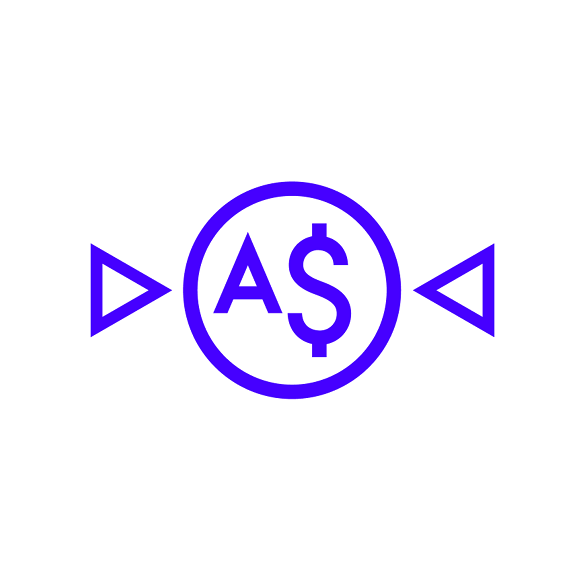Are you crypto-curious? Open to owning cryptocurrency assets and maybe even using them as actual currency but not ready to put your life savings into the project?
People like you have it easier than ever. Personally, I’m a crypto skeptic, and as someone who analyzes credit and debit cards for a living, the idea of a crypto-based rewards program makes me queasy. But even I have to appreciate payment products like the Coinbase Card, a debit card that earns crypto rewards — offering exposure to crypto without direct coin purchases.
To be clear, crypto is inherently risky. As simple and user-friendly as the Coinbase Card is, I wouldn’t recommend it to anyone who’s not willing to lose their entire rewards balance if the underlying coins go to zero. And spending crypto with the Coinbase Card can have significant tax implications because the IRS treats such transactions as asset sales. So before you apply for the Coinbase Card, be sure you understand how it works, its risks, and its limitations.
What Is the Coinbase Card?
The Coinbase Card is a Visa debit card that lets you spend U.S. dollars or crypto coins. Eligible purchases earn cryptocurrency rewards chosen from a rotating selection of coins, including Bitcoin, Ethereum, and a host of less well-known coins.
There’s no credit check required to get the Coinbase Card, but you must have an active Coinbase account. You can only have one card per account — no secondary or authorized users.
What Sets the Coinbase Card Apart?
The Coinbase Card isn’t the best rewards debit card around, but it does have some notable selling points that set it apart from the competition.
- Higher Rate of Return Than Most Rewards Cards. The Coinbase Card has a higher potential rate of return than most no-annual-fee rewards cards. You can reliably earn up to 4% back in crypto on eligible purchases, though actual returns are subject to change at Coinbase’s discretion.
- No Need to Spend Crypto. You don’t have to spend crypto on your Coinbase Card. It supports U.S. dollar and USDC stablecoin purchases too. That’s important because spending crypto can have tax consequences.
- Good Variety of Crypto Coins. You can select your preferred reward coin from a rotating variety of cryptocurrencies, including standards like Bitcoin and up-and-comers like The Graph.
Key Features of the Coinbase Card
The Coinbase Card is a pretty straightforward payment product for people familiar with crypto. For first-timers, it can be a bit mystifying. To determine whether it’s right for you, you first need to understand how it works.
Access to both Physical & Digital Cards
Once your Coinbase Card account is active, you can immediately begin using the digital version of your card for online purchases and at real-world merchants that accept Apple Pay or Google Pay. Find the card number and CVV (card verification value) code in your Coinbase account (online or in the Coinbase mobile app).
Expect to receive your physical Coinbase Card within 10 business days of sign-up. Once you have it in hand, you can use the Coinbase Card at real-world merchants that don’t accept contactless payments.
Funding Your Card
You can fund your Coinbase Card with fiat currency (U.S. dollars) from a linked bank account. Once the funds are on your card, you can spend them as U.S. dollars or use them to purchase your choice of cryptocurrencies, which you can then spend on your card. Fees may apply when you purchase (or sell) cryptocurrencies.
Your U.S. dollar deposits are held with Metabank, an FDIC-insured bank, and have full FDIC insurance up to statutory limits. So do balances held in USDC, a stablecoin pegged to the U.S. dollar. Other crypto balances aren’t FDIC-insured, however.
Spending With the Coinbase Card
You can use your Coinbase Card anywhere Visa is accepted, with the exception of the prohibited merchant categories below.
Still, that’s millions of locations worldwide, and the exceptions are easy enough to get around with another form of payment. So the Coinbase Card isn’t much different from credit and debit cards that use fiat currency (a type of government-issued money) only.
You can choose to spend U.S. dollars, USDC (USD Coin, a stablecoin pegged to the U.S. dollar), or cryptocurrency with your Coinbase Card. You can use your card to spend crypto even if the merchant doesn’t accept direct crypto payments. Coinbase converts your coins to U.S. dollars before executing the transaction.
Being able to spend your preferred crypto coin sounds pretty cool, but there’s a catch. The IRS treats cryptocurrency as an asset, which means selling it has tax implications. If your crypto has gained value, you could incur a significant tax hit when you spend it.
Talk to your tax advisor, but I certainly wouldn’t use the Coinbase Card to spend crypto. My two cents: Stick to U.S. dollar or USDC purchases.
Coinbase Card Spending Limits
Every Coinbase Card account has an ATM withdrawal limit of $1,000 per day. That’s a lot of money, so it shouldn’t come into play unless you need a lot of cash for under-the-radar transactions — which is why Coinbase and its banking partner, Metabank, impose this limit in the first place.
More annoying is the Coinbase Card’s spending limits, which it calls spend allotments. These are calculated monthly and vary by user but are generally in the four-figure to low-five-figure range — a potential problem if you’re a high earner who uses the Coinbase Card as your primary spending card. You can find your current spend allotment in your Coinbase account.
Earning Crypto Rewards
For most users, the Coinbase Card’s biggest selling point is the rewards program. All card purchases earn your choice of rotating monthly crypto rewards offerings. While the coin types you can earn change each month, stalwarts like Bitcoin and Ethereum are permanent. Eligible purchases include purchases of cryptocurrency on Coinbase, meaning you can earn bonus crypto when you buy crypto.
Your return on spending depends on the reward you choose. A popular, highly liquid coin like Bitcoin has a lower return — 1% to 2%, at most. Less popular, less liquid coins like Algorand or Dogecoin and your return will be higher — up to 4%.
That would seem to incentivize opting for less popular coins, but there’s an obvious downside to that: Less popular coins tend to be even more volatile than Bitcoin and Ethereum, and it’s possible for any given coin to lose all its value. Unless you immediately convert your rewards to U.S. dollars — which can have tax implications — you’re exposed to this downside risk.
Redeeming Rewards With the Coinbase Card
You automatically earn crypto rewards as you spend, and Coinbase drops the coins into your Coinbase account. You can spend earned rewards on your Coinbase Card or convert them to U.S. dollars, both of which may have tax implications.
Advantages of the Coinbase Card
The Coinbase Card isn’t my cup of tea, but it does have some selling points that could make it an attractive option for some users. These are the most persuasive arguments for this card.
- No Annual Fee. The Coinbase Card doesn’t have an annual fee, so it doesn’t cost anything to keep in reserve.
- No Credit Check Required. The Coinbase Card is a debit card, not a credit card. That means it doesn’t require a credit check during the application process, though you do have to go through a standard identity verification process so Coinbase can confirm you are who you say you are.
- No Need to Spend or Buy Crypto. Coinbase touts the fact that you can buy crypto with the Coinbase Card and earn rewards in the process, but you’re under no obligation to do so. Ditto for spending crypto — you can spend only U.S. dollars if you’d like, and I’d argue that’s the best move for tax reasons, anyway.
- Accepted Wherever Visa Is. The Coinbase Card is a Visa debit card, which means it’s accepted by millions of merchants worldwide. That includes the vast majority of merchants that don’t (yet) accept direct crypto payments.
- No Coinbase ATM Fees. Coinbase never charges ATM withdrawal fees when you use your Coinbase Card to get hard cash. But third-party ATM fees may still apply.
- Comes With Full Access to the Coinbase Platform. You need a Coinbase account to get the Coinbase Card. That sounds like a chore, but the benefit is full, free access to the Coinbase platform, with features like real-time prices for thousands of crypto assets.
Disadvantages of the Coinbase Card
The Coinbase Card isn’t a terrible product, but in my opinion, the downsides outweigh the advantages. This is due both to the fact that the card is crypto-based, which isn’t ideal in my book, and to limitations of the card itself.
Consider these drawbacks carefully before you apply.
- Spending Crypto Has Tax Implications. In the IRS’s eyes, all cryptocurrencies except stablecoins (like USDC) are assets. That means you may incur a tax liability when you sell cryptocurrency for more than you paid for it.
- Monthly Spend Allotment Limits Rewards Potential. The Coinbase Card comes with a monthly spend allotment, limiting your theoretic rewards-earning potential.
- Rewards Value Can Fluctuate Dramatically With the Crypto Market. All cryptocurrencies, even well-known ones like Bitcoin, are highly volatile. Your Coinbase Card rewards can lose value, all the way to zero.
- No Bonus Spending Categories. The Coinbase Card offers solid rewards potential — up to 4% return on spending — but it doesn’t have any bonus spending categories that boost your earnings. Many popular rewards credit cards do have favored spending categories that offer 5%, 6%, or even higher returns on spending.
- Higher Returns Usually Mean Higher Risk. Coinbase offers higher rewards rates on lesser-known crypto coins, encouraging you to take more risk with your rewards. That’s fine as long as you understand your rewards can lose value.
- Limit One Card Per Coinbase Account. Coinbase doesn’t allow secondary or authorized users, a significant disadvantage compared with most credit cards. There’s a strict limit of one Coinbase Card per Coinbase account.
- Few Additional Card Perks. The Coinbase Card has no real value-added perks to speak of beyond the crypto rewards program. Competitors like the Crypto.com Visa offer complimentary streaming subscriptions, airport lounge access, and other potentially valuable benefits.
Is the Coinbase Card Legit?
The Coinbase Card is legitimate, but it’s not for everyone.
Like owning stocks, owning cryptocurrency is inherently risky and presents the very real possibility of principal loss (losing your initial investment). Many cryptocurrencies are not “legit” in any meaningful sense — they’re highly illiquid, controlled by a few people, and vulnerable to crashes.
If you choose well-known, more liquid coins like Bitcoin as your reward, you’re on firmer ground, though principal loss is still a possibility.
From a security perspective, the Coinbase Card is just as legitimate as any other debit card since it’s backed by a reputable crypto exchange (Coinbase) and member-FDIC bank (Metabank). But Metabank’s FDIC insurance only applies to actual cash balances on your Coinbase Card — another reason not to carry large crypto balances on your card.
How the Coinbase Card Stacks Up
The Coinbase Card isn’t the only crypto debit card available to U.S. users. One of its better-known competitors is the Crypto.com Visa Card, which has multiple tiers that depend on how much crypto you passively invest in on Crypto.com.
Compare them side-by-side in terms of potential rewards rate, spending and withdrawal limits, and cardholder perks.
| Coinbase Card | Crypto.com Visa | |
| Potential Rewards Rate | Up to 4% | Up to 5% |
| ATM Withdrawal Limit | $1,000 per day | $5,000 to $10,000 per month |
| Spending Limit | Varies, but generally in the thousands per month | $25,000 per month |
| Cardholder Perks | None | Free streaming, Amazon Prime, and airport lounge access |
Note that the rewards rates and other aspects of each card are subject to change and may depend on account type and funding amount.
Other Alternatives to Consider
Not sure the Coinbase Card is the right card for you? If you’re truly set on a crypto rewards card, but aren’t sold on Coinbase or the Crypto.com Visa, there are other alternatives.
| Product Service | Best For |
| Gemini Credit Card | Targeted spending on dining (3%) and grocery (2%) purchases |
| BlockFi Visa Signature Card | Big spenders (no rewards limits) |
| SoFi Credit Card | Option to get cash or crypto rewards |
| Upgrade Bitcoin Rewards Credit Card | High credit limit (up to $25,000) |
Final Word
A Coinbase Card makes sense if:
- You want to receive rewards in crypto and understand crypto’s risks in general
- You want a debit card rather than a credit card — whether to control your spending or due to poor credit
- You’re OK with Coinbase’s spending and ATM withdrawal limits
- You accept the potential tax consequences of spending crypto
It’s a fine payment card if you can see your way past the downsides. I wouldn’t use it myself, but it’s not a scam, which unfortunately needs to be said when discussing anything crypto-related. Were I a crypto bull, I’d strongly consider applying for it.
But no matter how bullish you are on crypto, consider non-crypto alternatives before settling on the Coinbase Card. You might be surprised by your entry-level travel rewards credit card options or discover a cash-back card that perfectly aligns with your daily spending habits. Crypto fans love telling skeptics to keep an open mind. That’s advice worth taking.






































